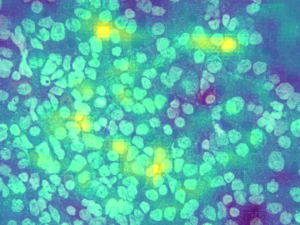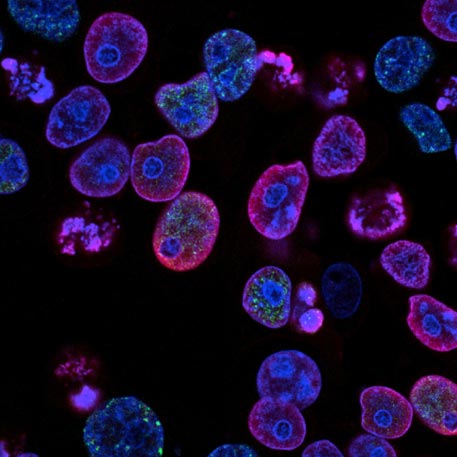Deep learning usually thrives on large data sets, which makes the training of classifiers in rare cancer entities rather complicated. Acute promyelocytic leukemia (APL) is a rare subform of acute myeloid leukemia (AML) that is characterized by the pathognomonic t(15;17) which leads to a differentiation halt at the promyelocytic stage. While modern therapies allow for high cure rates, many patients still succumb to complications such as bleeding within the first few days which warrants the need for fast and accurate detection.
We have now extended our computer vision prototype to detect APL. The classifier achieves a hit-rate of 96% when comparing APL and healthy controls as wells as 86% when comparing APL and AML. This is even more remarkable considering our APL classifier was trained on merely 51 samples of APL (yes, it’s a very rare condition!) and is still able to accurately detect APL. Further use-cases and applications of our prototype are work in progress, so stay tuned for more!
Citation: Eckardt, JN., Schmittmann, T., Riechert, S. et al. Deep learning identifies Acute Promyelocytic Leukemia in bone marrow smears. BMC Cancer 22, 201 (2022). https://doi.org/10.1186/s12885-022-09307-8
Link: https://bmccancer.biomedcentral.com/articles/10.1186/s12885-022-09307-8







